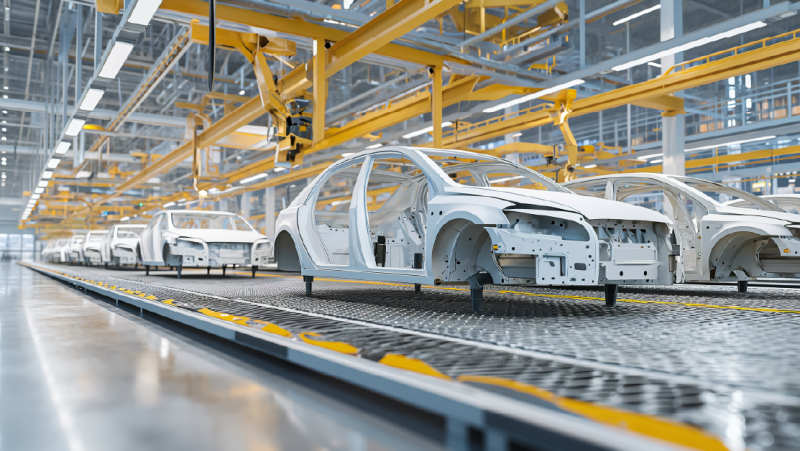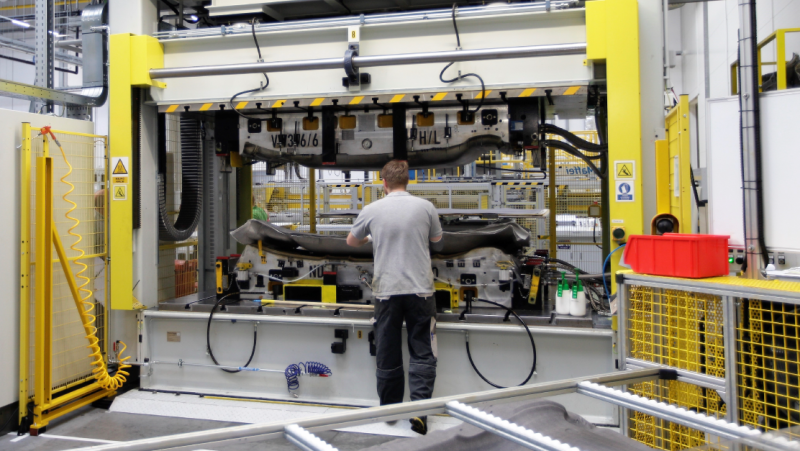Planning of SMT Lines and Consequent Processes in Electronics
- Digital Factory
- Article
Practically all companies fabricating electronics use the SMT (Surface Mount Technology). In most of them, however, the production process is not finished by automatic installation. The next phase is semi-automatic or manual assembly of components on PCB printed circuit boards, and completion of output products.
Production companies in the area of electronics must face the issue of planning large amounts of input materials and processes, different technological procedures on various workplaces, and various final products.
On SMT in general
Transient from classical installation of printed circuit boards allowed for mass production using highly mechanized production. Several processes is involved in one SMT line. From dosing systems, silkscreen printing and paste application check, SMD components installation and automatic optical inspection, to soldering in furnace and final check. Each of the workplaces has its own setup and limits, mutually affecting each other, and they must be considered during the production plan development. For example, there are time consequences of the first and the other side of the printed circuit board installation, number of screens affecting options of parallel production, cycle time for particular products, setup times between items, scrap rate, etc., within the SMT lines.
Why the APS is needed
For the correct and effective usage of machines, not only the number of the machine operators must be planned, but primarily the production processes, so that operations are tied together perfectly. The basis is the real setup of procedures and bills of material together with the definition of all limiting factors during the production. In case of such a large production like the production of electronics, there are so many parameters defined, that the schedulers are not capable of creating an adequate plan using standard tools, such as Excel. In order to consider all input factors, more robust solution is required in the form of APS. Such solutions are integrated directly to ERP of the plant, and they provide the capability of working with all available data from the production, logistics, purchase, and sales. At the same time, they allow for systematic setup of all limiting conditions, so that a plan can be created reflecting exactly requirements of customers, and respecting capacity limitations of the production and warehouses. They ensure sufficiently fast calculation, capable of responding to customer changes, machines failures, or missing material. The solution schedulers are provided with sufficient visual summary of the production plan, so that current state of specific order, item, resource, etc., can be found any time. Though, it is a robust solution, user interfaces are very user-friendly, and key users can make changes and system setup on their own. In this way, the future development of the system is ensured together with the development of the company.
Settings and APS benefits
Among others, the implementation of APS to the production company can ensure the following:
- setup of all limiting conditions on particular workplaces, automatic installation of SMT, manual assembly of components on PCB, final product assembly,
- definition of various production procedures, and planning for particular workplaces,
- cohesion of the whole production within all processes,
- complete administration of calendars and shifts for particular resources,
- outputs from the plan to the production – work queue,
- outputs from the plan to the material purchase – evolution of consumption,
- outputs from individual machines – maintenance, number of tool changes per defined period of time, number of installed components per defined period of time, machine load.
SMT lines – detail:
- setting the number of screen in the buffer, total number of screens, screen replacement time, consequences of screens and their combinations, number and combinations of items per screen,
- compliance with defined period of time between installation of the first and the other side of the printed circuit board,
- production in sufficient time buffer before the next phase of the production, but in the connection with the final product delivery,
- production levelling, i.e. even distribution to particular SMT lines for the components, which can be produced in parallel on multiple workplaces,
- optimization of order assignment to particular lines based on defined keys – such as installation of the other side only after the installation of the first one, installation of the other side following the first one only up to x hours, current capacity of specific SMT line, final product delivery due date.
Share article
Top stories from logistics, production and IT.
Subscribe to Aimtec Insights
By registering, you agree to the processing of your personal data by Aimtec as described in the Privacy policy.
Get top stories and articles
from Logistics, Production and IT.
Subscribe to Aimtec Insights
By registering, you agree to the processing of your personal data by Aimtec as described in the Privacy policy.







